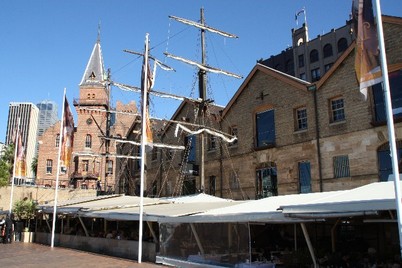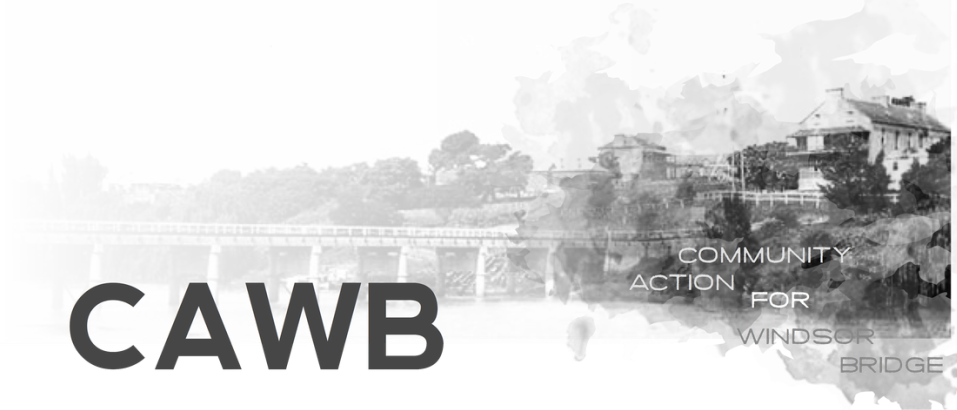 The Rocks, Sydney.
Image courtesy of www.aussietrueblue.com
The Rocks, Sydney.
Image courtesy of www.aussietrueblue.com
A Brief History of Green Bans
Green Bans spring from the great period of activism of the late 1960s and early 1970s. Members of the Builders Labourers Federation, predecessor to today’s CFMEU, were becoming increasingly concerned about the lack of planning for the unbridled development then going on in NSW.
Green Bans always were and always will be about social responsibility. They always occur at the request of, and in support of, residents' groups and have a long, proud tradition of protecting places under threat from improper development.
Today the existence of the historic Rocks, (planned to become office towers) and the Royal Botanic Gardens (planned to be a car park for the Sydney Opera House) are examples from this period of the importance of Green Bans, which also protected the residential areas of Ultimo, Glebe, Annandale, Rozelle and Leichhardt from a planned expressway.
Preserving heritage was a key concern and the BLF and the National Trust worked together to save 1700 buildings in New South Wales. Green Bans protected heritage sites such as:
In a letter to the Sydney Morning Herald in January 1972, Jack Mundey articulated the union's principles:
Yes, we want to build. However, we prefer to build urgently-required hospitals, schools, other public utilities, high-quality flats, units and houses, provided they are designed with adequate concern for the environment, than to build ugly unimaginative architecturally-bankrupt blocks of concrete and glass offices…Though we want all our members employed, we will not just become robots directed by developer-builders who value the dollar at the expense of the environment. More and more, we are going to determine which buildings we will build …The environmental interests of three million people are at stake and cannot be left to developers and building employers whose main concern is making profit. Progressive unions, like ours, therefore have a very useful social role to play in the citizens' interest, and we intend to play it.
The federal Department of Urban and Regional Development in 1973 acknowledged the effectiveness of the NSWBLF:
Where pleas and reasonable requests could be ignored or summarily dismissed by government, and especially by private developers, the threat of direct strike action by workmen on the site is a matter of immediate concern and negotiation.
Green Bans spring from the great period of activism of the late 1960s and early 1970s. Members of the Builders Labourers Federation, predecessor to today’s CFMEU, were becoming increasingly concerned about the lack of planning for the unbridled development then going on in NSW.
Green Bans always were and always will be about social responsibility. They always occur at the request of, and in support of, residents' groups and have a long, proud tradition of protecting places under threat from improper development.
Today the existence of the historic Rocks, (planned to become office towers) and the Royal Botanic Gardens (planned to be a car park for the Sydney Opera House) are examples from this period of the importance of Green Bans, which also protected the residential areas of Ultimo, Glebe, Annandale, Rozelle and Leichhardt from a planned expressway.
Preserving heritage was a key concern and the BLF and the National Trust worked together to save 1700 buildings in New South Wales. Green Bans protected heritage sites such as:
- Pitt Street Congregational Church (February 1972);
- Theatre Royal (May 1972);
- Regent Theatre (October 1972);
- Newcastle Hotel in George Street (October 1972);
- Helen Keller Hostel for Blind Women in Waimea Avenue, Woollahra (March 1973);
- Royal Australasian College of Physicians, an 1848 building at 145 Macquarie Street (December 1973);
- Catholic Church Presbytery, an Edwardian mansion in Moore Park Road (May 1974);
- State Theatre (June 1974).
In a letter to the Sydney Morning Herald in January 1972, Jack Mundey articulated the union's principles:
Yes, we want to build. However, we prefer to build urgently-required hospitals, schools, other public utilities, high-quality flats, units and houses, provided they are designed with adequate concern for the environment, than to build ugly unimaginative architecturally-bankrupt blocks of concrete and glass offices…Though we want all our members employed, we will not just become robots directed by developer-builders who value the dollar at the expense of the environment. More and more, we are going to determine which buildings we will build …The environmental interests of three million people are at stake and cannot be left to developers and building employers whose main concern is making profit. Progressive unions, like ours, therefore have a very useful social role to play in the citizens' interest, and we intend to play it.
The federal Department of Urban and Regional Development in 1973 acknowledged the effectiveness of the NSWBLF:
Where pleas and reasonable requests could be ignored or summarily dismissed by government, and especially by private developers, the threat of direct strike action by workmen on the site is a matter of immediate concern and negotiation.

